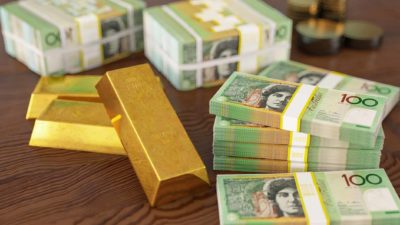The Northern Star Resources Ltd (ASX: NST) share price isn't escaping the wider market selloff today.
Northern Star shares closed on Tuesday trading for $8.06, down 3.13%.
The Northern Star share price joined the wider selling action, fuelled by hot running inflation figures and fears of aggressive interest rate hikes out of the United States.
This saw US markets fall sharply yesterday (when the ASX was closed for the Queen's Birthday holiday) and caused similar angst here today, with the All Ordinaries Index (ASX: XAO) closing down 3.70% at the end of the day.
With gold prices also down around 2.5% since the US inflation figures were released on Friday, the S&P/ASX All Ordinaries Gold Index (ASX: XGD) also closed down 2.06% today.
But, according to Catapult Wealth portfolio manager Tim Haselum, gold stocks, and particularly the Northern Star share price could have a strong year ahead.
Low debt and long mine life
Northern Star has a current market cap of approximately $9.4 billion. Focused on gold, the company produces and explores in Western Australia, the Northern Territory and the US state of Alaska. The miner pays a trailing dividend yield of 2.4%, fully franked.
Commenting on the outlook for Northern Star, Haselum said (courtesy of The Advertiser):
The main variables here are the gold price, currency and production volumes. Like all commodity companies, NST reported rising costs as wages and transport expenses keep pushing higher. Despite this, NST ha a very low debt, strong track record for management and their mines are relatively long life.
Haselum acknowledged the rising interest rate environment, but added, "We think you have to throw the old economic textbooks out as we could still see strength in gold valuations and it continues to be an attractive store of wealth."
Catapult Wealth has a buy rating on the miner and a 12-month target of $11.88 for the Northern Star share price.
Northern Star share price snapshot
The Northern Star share price hit all-time highs in November 2020.
This year the miner has been struggling, with shares down 14% in 2022. That compares to a year-to-date loss of 10% posted by the S&P/ASX 200 Index (ASX: XJO).









